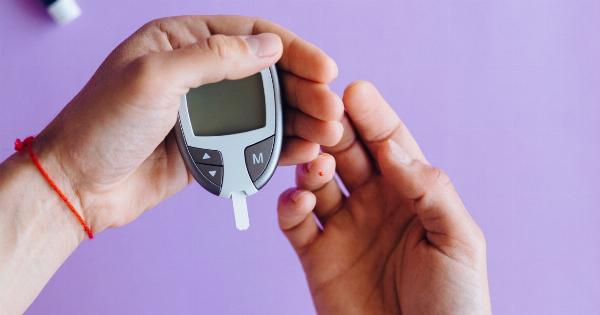Walking is one of the simplest and most accessible forms of exercise that can be incorporated into our daily routine. It not only helps in maintaining a healthy weight but also promotes overall well-being.
In fact, indulging in a short walk after meals has been found to offer numerous benefits to our health. Let’s dive into why walking after eating is beneficial and why you should consider making it a part of your post-meal routine.
Improves Digestion
Walking after eating can aid in digestion by stimulating and enhancing the functioning of the gastrointestinal tract. When we walk, the physical activity helps to speed up the digestion process by increasing the blood flow to our stomach and intestines.
This accelerates the absorption of nutrients and enhances the overall efficiency of digestion, reducing the likelihood of indigestion and bloating.
Regulates Blood Sugar Levels
For those with diabetes or elevated blood sugar levels, walking after a meal can be particularly beneficial. Research suggests that post-meal walking helps regulate blood sugar levels by improving insulin sensitivity.
When we walk, our muscles require energy, and this helps our body utilize glucose from the bloodstream for fuel, thereby lowering blood sugar levels.
Aids Weight Management
If weight management is one of your health goals, walking after eating can be an effective strategy. When we walk, calories are burned, and the energy expenditure increases.
This can contribute to weight loss or prevent weight gain, especially when combined with a balanced diet. Additionally, walking after a meal helps curb cravings and reduces the likelihood of snacking on unhealthy foods.
Reduces Heartburn and Acid Reflux
Heartburn and acid reflux are common digestive issues that can be uncomfortable and distressing. Walking after eating can help alleviate symptoms of heartburn by aiding digestion and preventing acid from refluxing into the esophagus.
The vertical position of walking helps gravity keep stomach acid in the stomach, reducing the frequency and severity of acid reflux episodes.
Enhances Mood and Mental Well-being
Physical activity, including walking, has a positive impact on mental health and well-being. Engaging in a post-meal walk can help reduce stress, anxiety, and depression.
Walking outdoors, especially in green spaces, allows you to connect with nature and enjoy a change of scenery, further enhancing mood and providing a sense of relaxation and rejuvenation.
Boosts Energy Levels
Ever felt sluggish and lethargic after a heavy meal? Walking can come to your rescue! When we walk, our heart rate increases, and more oxygen is delivered to our muscles, tissues, and brain.
This oxygen boost increases our energy levels, helps combat post-meal drowsiness, and keeps us alert and focused throughout the day.
Improves Sleep Quality
A post-meal walk can also have a positive impact on the quality of your sleep. Walking after dinner aids in the digestion process and helps regulate your circadian rhythm.
It promotes a better transition into the restful state required for a good night’s sleep. However, it is advisable to have a moderate-paced walk rather than an intense workout close to bedtime.
Stimulates Creativity
If you are engaged in creative work or looking for inspiration, walking after a meal can be a great way to boost your creativity. Walking is known to enhance cognitive function and stimulate creative thinking.
The change in environment, fresh air, and increased blood flow to the brain can help you overcome mental blocks and find innovative solutions to problems.
Strengthens Muscles and Bones
Walking is a weight-bearing exercise that helps build and strengthen muscles and bones. By going for a walk after eating, you engage various muscle groups, including your legs, core, and arms, leading to increased muscle tone and improved bone density.
Regular walking can contribute to better posture, balance, and overall physical strength.
Promotes Longevity
Various studies have shown that regular physical activity, such as walking, is associated with a longer and healthier life.
Incorporating a post-meal walk into your routine can help you achieve the recommended daily physical activity goals, reduce the risks of chronic diseases, and lead to an increased lifespan. Walking also improves cardiovascular health, lowers blood pressure, and enhances overall well-being.
Incorporating Post-meal Walks into Your Routine
Now that you are aware of the numerous benefits of walking after eating, you might be wondering how to incorporate it into your daily routine. Here are some tips to help you get started:.
- Make it a habit: Aim to walk for at least 10 to 15 minutes after each main meal. Gradually increase the duration and intensity of your walks as your fitness level improves.
- Find a walking buddy: Ask a family member, friend, or neighbor to join you for a post-meal walk. This can make the activity more enjoyable and help you stay motivated and accountable.
- Choose the right time: Allow some time for digestion before you start walking. It is generally recommended to wait for 30 minutes to an hour after a meal before going for a walk.
- Take a scenic route: Explore different routes and walking trails in your neighborhood or nearby parks. Walking in a pleasant environment can make the experience more enjoyable and help you unwind.
- Stay consistent: Aim to walk after each meal, including breakfast, lunch, and dinner. Consistency is key when it comes to reaping the benefits of this healthy habit.
Remember to listen to your body and consult with a healthcare professional if you have any underlying health conditions or concerns.































